Archive for the ‘UOA’ Category.
September 23, 2012, 12:00 am
Comments — “Iron and lead are a little higher this time around, but it’s hard to call these levels a problem since we’ve seen them before from this engine (see the 9/19/2010 sample). For now, they are just something to watch. Fuel dilution was present at 3.0%, which is a cautionary amount and could show a fuel system problem. The potassium and sodium is from the WVO. These levels are normal for your engine (see unit/location averages). The TBN was 5.8 showing lots of active additive left, but try just 5,000 miles next due to wear and watch your oil pressure.”

July 30, 2012, 12:00 am
Comments — “Iron and lead are a little on the high side in this sample. Iron though isn’t too much higher on a ppm/mile basis. Last time you got 179.6 miles per ppm of iron and here you got 198.8 miles per ppm, which is actually a little better. Lead is higher than past samples though, showing some extra bearing wear. Potassium and sodium is probably just from the WVO, but these contaminants tend to attack bearings first, so that’s something to watch. The TBN was strong at 5.4. Try just 7,000 miles on the next oil and check back to monitor lead.”
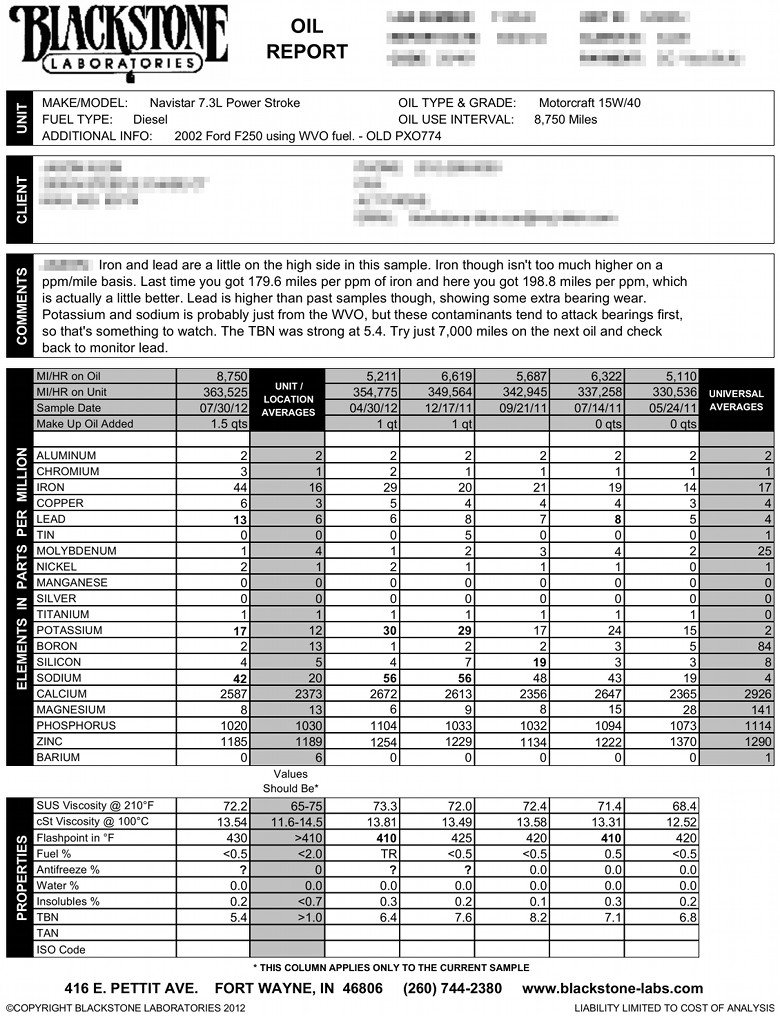
April 30, 2012, 12:00 am
Comments — “Wear generally increased after the shorter 5,211-mile oil change, but not enough to suggest that any mechanical problems are developing. Instead, the extra wear was likely caused by something operational such as some heavy hauling/towing or increased idling/city driving. Potassium and sodium are common ingredients in WVO, so that’s very likely where these elements are coming from, but watch the coolant level on the off chance they show antifreeze. The trace of fuel is normal. A TBN of 6.4 is strong. Your 7.3L PSD should do well with 7K miles next time.”
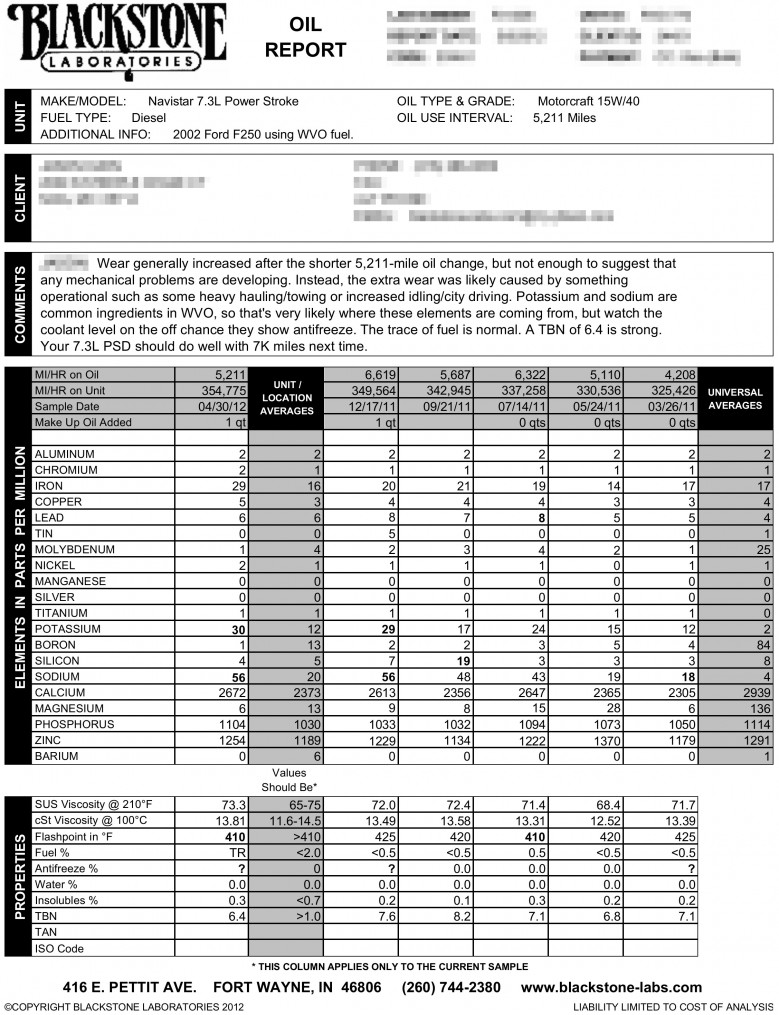
December 17, 2011, 12:00 am
Comments — “While the potassium and sodium could show coolant seeping into the oil, the WVO you’re running as fuel may also be to blame. Since wear is reading normally, as long as you don’t notice any lost coolant or increased oil on the dipstick we aren’t going to consider potassium and sodium a problem. You noted an increased cost for Motorcraft oil, and we won’t expect to see any change in wear if you switch to Shell Rotella T. In fact, many Power Stroke owners have had great success running that oil type. The TBN was strong at 7.6. Try up to 8,000 miles next.”
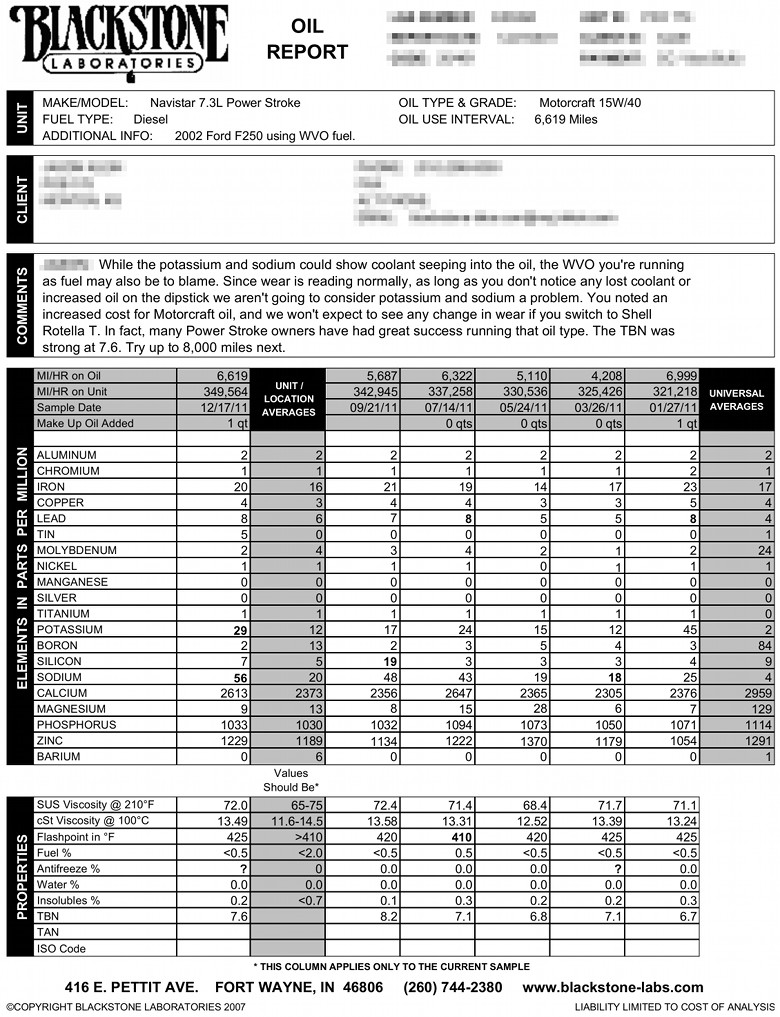
September 21, 2011, 12:00 am
Comment — “Thanks for the note about the air intake. We did find a little extra silicon, which could be dirt that made its way past the intake. The good news is that wear still looks great, so not enough dirt got through to hurt anything. Of course, if any sealants were used to replace the glow plugs, that could explain silicon as well. Lead improved a little. This level is still higher than average, but not enough bearing wear to be cautionary. No fuel or coolant found. The TBN was strong at 8.2 showing lots of active additive left. Try 7,500 miles on the next oil. Looking good.”
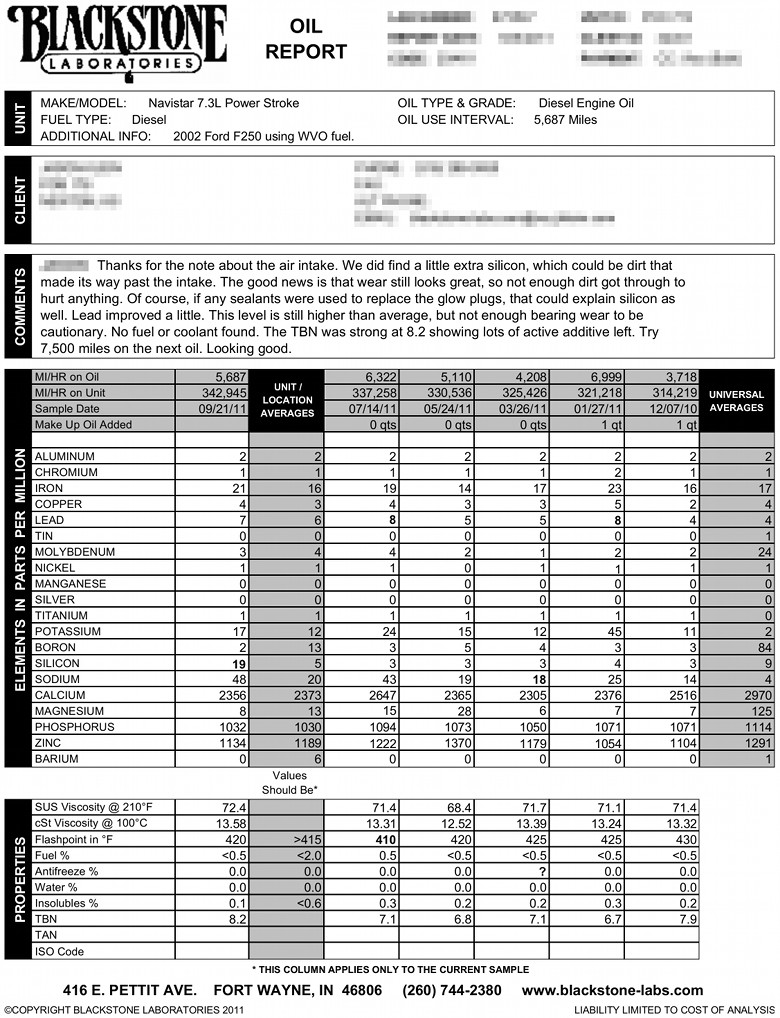
July 14, 2011, 12:00 am
Comments — “Nothing unusual turned up in this report. Wear metals still look fine, and the extra lead is probably more a function of the type of operation you do with this engine rather than any sort of bearing problem since lead isn’t any higher than we’ve seen in the past. Iron is a bit higher than last time, though since iron tends to accumulate in the oil during a longer oil run, that likely is the explanation for that. A minor amount of fuel was detected in this sample, though 0.5% isn’t enough to solicit any concern. The TBN is still just fine at 7.1. Try for 8,000 miles on your next fill.”

May 24, 2011, 12:00 am
Comments — “Thanks for the notes. The WVO is likely the source of potassium and sodium. These levels aren’t excessive compared to what we’ve seen before so we unhighlighted them. Wear metals look great in this sample, which is a good indication that the engine is doing just fine mechanically. The viscosity was in the 15W/40 range and no fuel or other harmful contaminants were found. The TBN was strong at 6.8 showing lots of active additive left. Five thousand miles on the oil should work just fine, but the engine could probably handle a little more. Nice report.”
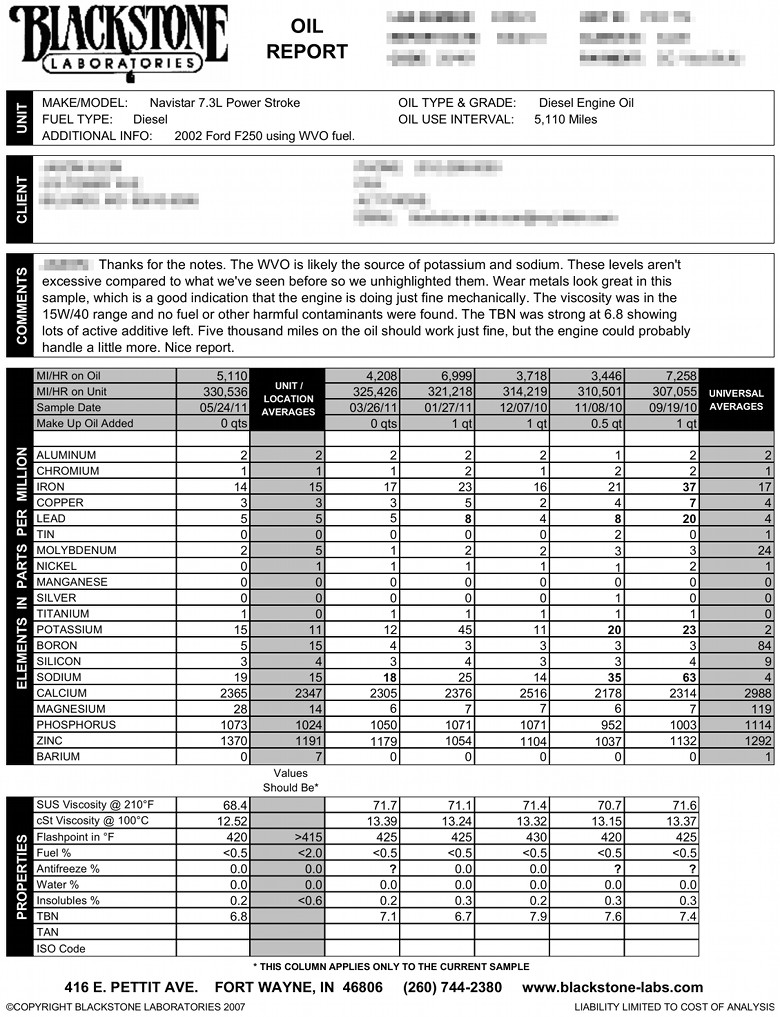
March 26, 2011, 12:00 am
Comments — “Wear metals read nice and low, showing no evidence that the hard starting caused excess wear during this most recent oil use interval in your F250’s diesel engine. Potassium and sodium have also been reading a bit higher than we like to see, but these amounts aren’t enough to cause concern and we will continue to watch for signs of coolant in the future. The TBN was 7.1, plenty of active additive remaining in the oil for a longer run. Try running the next oil out to about 6,000 miles and then check back to continue monitoring the health of your engine.”

January 27, 2011, 12:00 am
Comments — “A little excess lead was the only item of note in the latest sample from your Power Stroke. We’ve certainly seen it read a lot worse than 8 ppm, so we do not think this shows a bearing problem but we’ll still keep a close eye on it for you next time. All other wear looks great, especially for an oil run almost 7,000 miles and that’s always nice to see. It looks like running this oil past the 5,000 mile mark didn’t hurt you a but and you could go even longer next time, assuming lead holds steady. The TBN was strong at 6.7, so lots of active additive was left.”

December 7, 2010, 12:00 am
Comments — “AMEN! We were wondering about anti-freeze contamination for the last few samples and it cleared up nicely here, now that you’ve cut back on WVO. This report is great peace of mind that you’re not getting any excessive coolant in your oil. In the future, with potassium and sodium reading high from the WVO, we might not be able to tell if you have a coolant problem, so you might consider running straight diesel every once in a while just to check. Wear looks normal, and the TBN is strong at 7.9. Run your next oil longer (5,700 miles) if you want. Nice report.”










